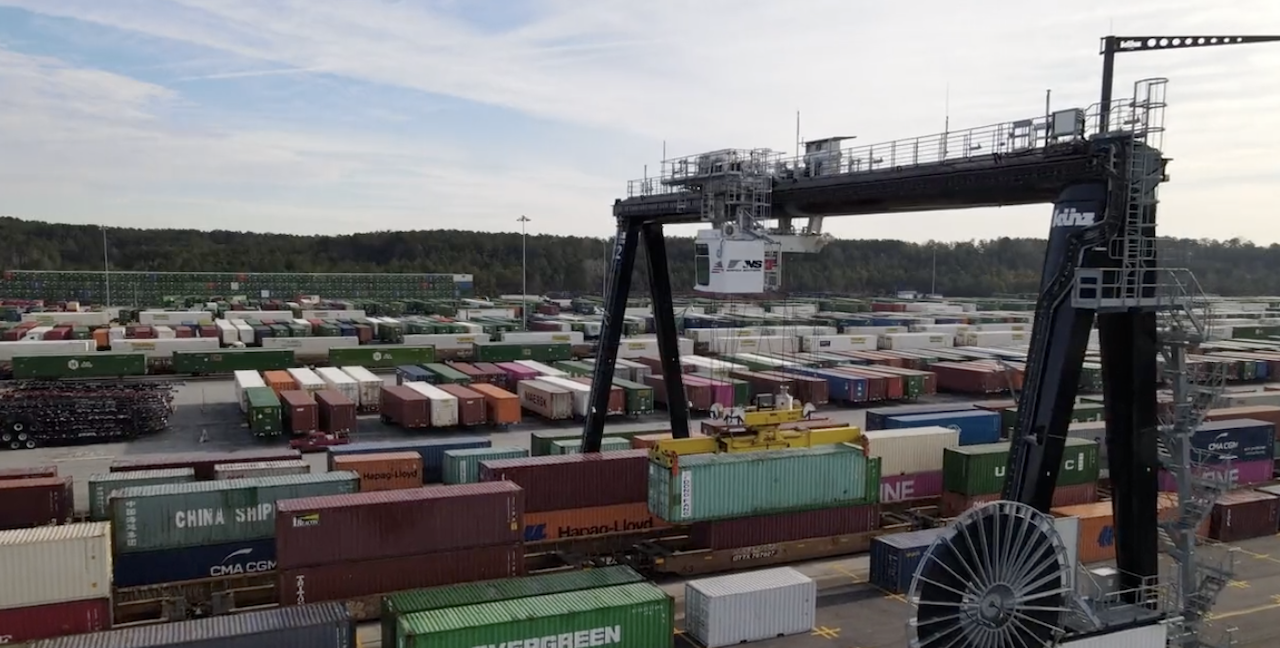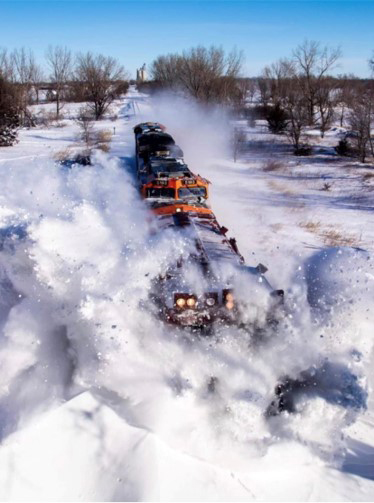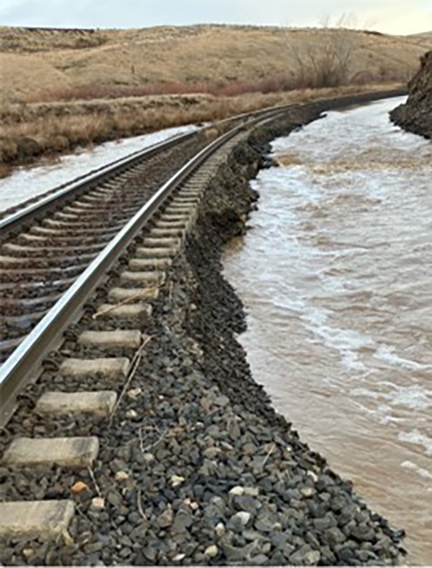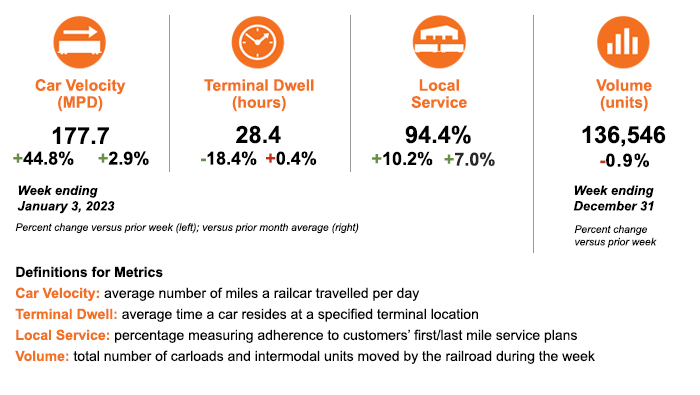
Class I Briefs: NS, BNSF
Written by Carolina Worrell, Senior Editor
Six fully electric cranes are now operational at NS's Austell, Ga. intermodal facility.
Fully electric cranes are operational at Norfolk Southern’s (NS) Austell, Ga. intermodal facility. Also, following a series of significant winter weather-related service challenges across much of the Northern Corridor, BNSF reported that the railroad’s overall velocity in the week ending Jan. 3 improved versus the week between the Christmas and New Year’s holidays and was slightly higher than the average for December.
NS announced Jan. 4 via a Twitter post that its six fully electric cranes are now operational at the Class I’s Austell, Ga. Intermodal facility.
According to the railroad, the cranes allow Austell to become a stacked-container facility, increasing capacity, and positions NS to capture expected growth of more than 100,000 containers at this facility. Additionally, NS says, the cranes allow the railroad to reduce carbon emissions.
Over the next 10 years, NS says it plans to convert the remaining 58 traditional overhead gantry cranes located across its 22-state network to hybrid or fully electric power. Through this conversion, the railroad estimates saving approximately 30 million gallons of fuel and reducing more than 300,000 metric tons of emissions over the preceding 20 years, when all cranes are replaced.
Watch a video of the crane installation here.
BNSF on Jan. 6 provided an intermodal network update stating that following a series of significant winter weather-related service challenges across much of its Northern Corridor, the Class I’s operating teams “remain focused on restoring network fluidity.”
According to BNSF, frequent winter storms and freezing temperatures during the past few weeks have negatively impacted service performance in many areas, from the Pacific Northwest to the Upper Midwest, which resulted in higher-than-normal levels of trains holding and delays. In response to the harsh conditions, BNSF says it “activated 24-hour command centers in multiple operating divisions across the North; shifted personnel and equipment to critical locations; and deployed additional resources to address the various service challenges, from the mechanical teams who worked to service the railroad’s locomotive fleet to engineering teams responding to track issues around the clock.”
This week’s additional snow accumulation in the Northern Plains and strong winds created significant snow drifts, BNSF says, requiring ongoing snow clearing and removal from the railroad’s main lines. Service in these areas continues to improve as the railroad’s recovery efforts remain ongoing and its operating teams build on the positive momentum going into next week, BNSF added.

Last week, BNSF says, heavy rain in Washington caused a flood-related track outage on the railroad’s Lakeside Subdivision in Washington between Pasco and Spokane. The main track was out of service for approximately 24 hours as crews removed debris and repaired the affected track as the waters receded.
According to BNSF’s intermodal update, overall velocity in the week ending Jan. 3 improved versus the week between the Christmas and New Year’s holidays and was slightly higher than the average for December. The average terminal dwell also increased versus the prior week but remained steady with last month. BNSF’s local service compliance improved and currently exceeds 94%, the Class I said.

“Our intermodal teams continue to drive positive service momentum and are keeping hub operations fluid, despite the record-breaking winter weather experienced in the Northern Corridor and in other portions of the network during the end of 2022,” BNSF said. “Even with these challenges facing them, team members were able to achieve the fastest average intermodal weekly train speeds of 2022 during every week of the last four weeks of the year.”
During the upcoming week, a storm tracking across the West will bring another round of heavy rainfall, strong winds and high-elevation snow to parts of California, Oregon and Washington. Flood watches, wind advisories and winter storm warnings are in effect for this region through early next week. BNSF says its operations teams are monitoring water levels in flood-prone areas and are “ready to quickly respond to any service disruptions.” Across much of the BNSF network, seasonable operating conditions are expected throughout the upcoming week.




